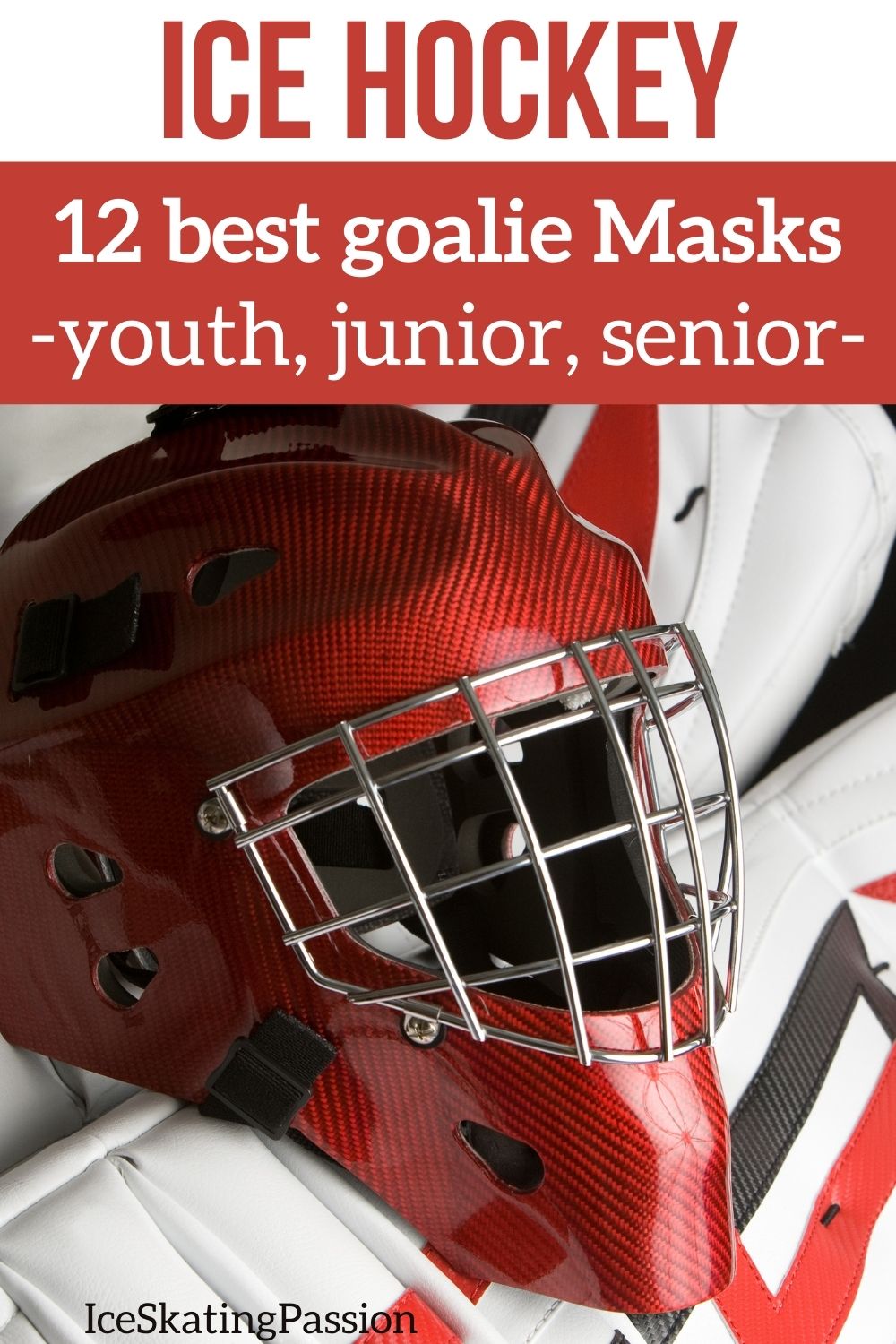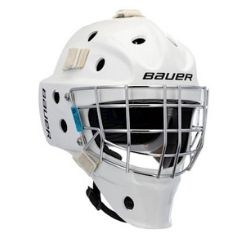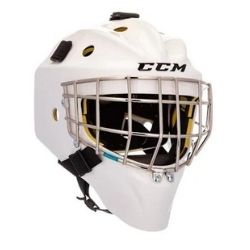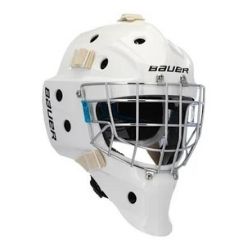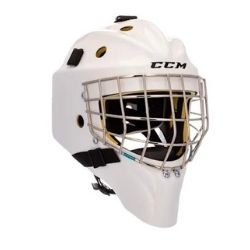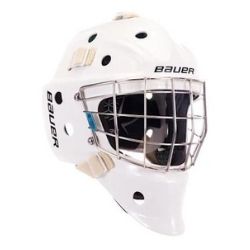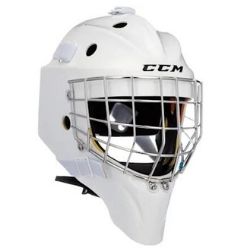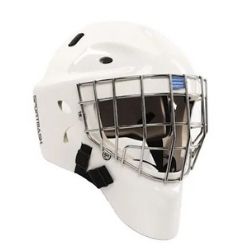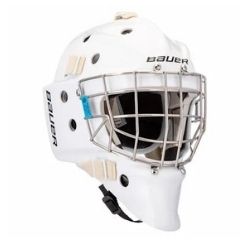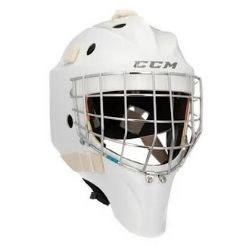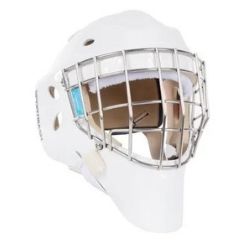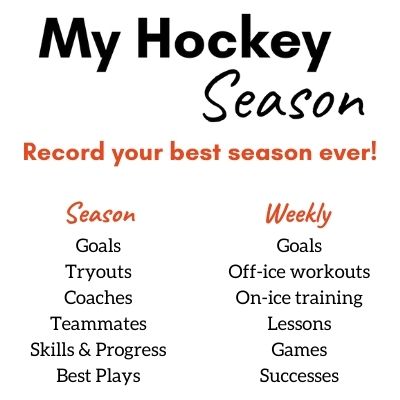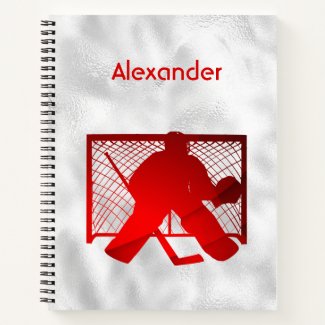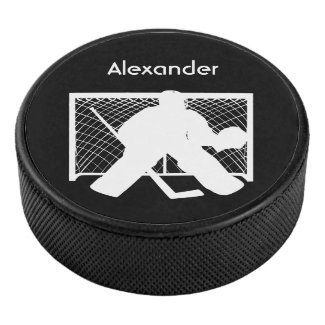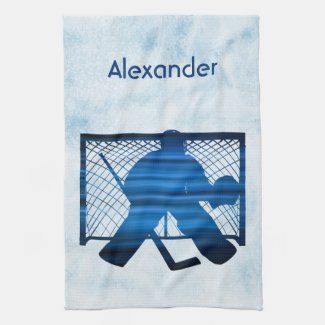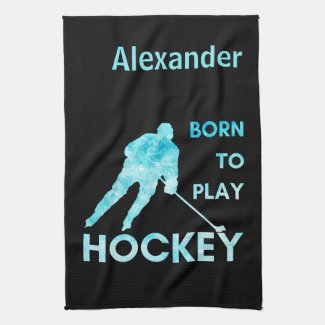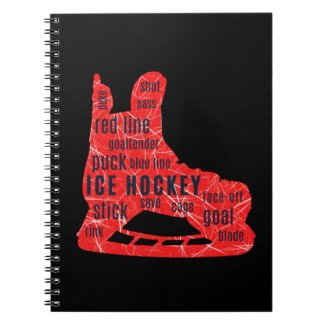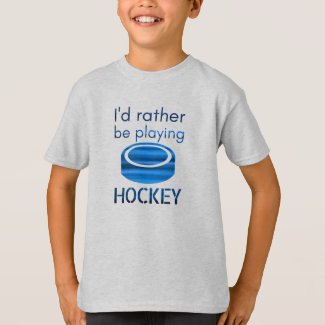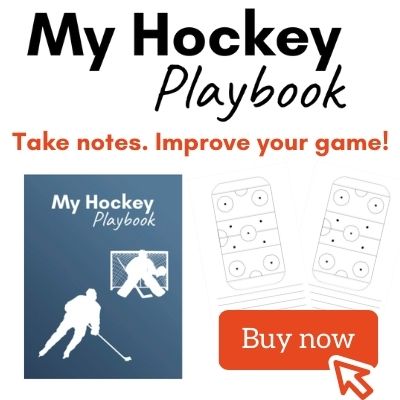The helmet is an essential part of playing ice hockey. And it is even more true for the goaltender who is the target of the pucks.
But in a sea of products, which one is the best hockey goalie mask for you or your kid?
Below are all my tips and selections:
- The 6 criteria to choose the helmet for you or your kid, easily explained
- The answers to your frequently asked questions
- Reviews of my selections for the best hockey goalie helmets in 2022 (youth, junior and senior)
- Tips to take care of helmets and heads
- Ideas to customize the mask
Note: if you are looking for helmets for other players, head to this article.

This article contains affiliate links. If you purchase using my link, I get a commission at no extra cost to you (more info here).
Best hockey goalie masks in 2022 - Short answer
Choosing your hockey goalie mask
This complete article gives your all the information your need about choosing the right hockey mask for you. But if you don't want to read everything, below is an overview of my suggestions for youth, junior and senior players. All are, of course, certified HECC et CSA.
Detailed reviews can be found further down.
All helmets are a balance of protection, fit and comfort.
2 best youth hockey goalie masks
Careful! Do not buy on Amazon. Those are street hockey masks with a lot less protection!
4 best junior hockey goalie masks
Lower price range
Higher price range
4 best senior goalie masks - recreational / intermediate level
3 best senior pro goalie masks
6 Criteria to choose the best hockey goalie helmet
Anatomy of the hockey goalie mask
A goalie mask consists of the following key components:
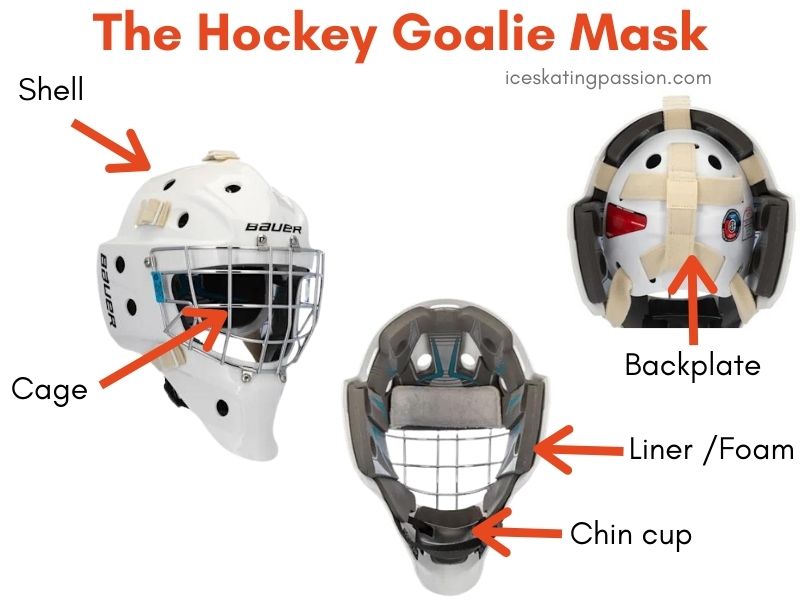
- Shell/Mask: This is the outer structure of the goalie helmet that is made using materials such as carbon, polycarbonate, etc. The shell needs to be strong and protective to absorb impacts and deflect shots taken directly at it.
- Foam/Padding/Liner: The interior of the goalie mask uses foam in the form of liner or padding to absorb impact and distribute it evenly across the shell. Basic helmets use a comfort lining of vinyl nitrile, while advanced level masks employ composite materials, dual-density foams, or a mix of expanded polypropylene and smart or memory foams.
- Backplate: The backplate is the backside of the goalie mask shell. This plate also contains adjustment straps to customize the fit of the helmet to the exact shape of the goaltender.
- Chin cup: The chin cup of a goalie mask is deeper than the regular player helmet. It supports the chin and comes with a strap whose fit can be adjusted in a way that best secures the helmet.
- Cage: This is the face-protecting unit attached to the front of the shell.
(For extra protection, may goalies also use a dangler or a neck guard)
#1 - Certification
Certification standards are established by ASTM (American Society for Testing and Materials) in the USA and CSA (Canadian Standards Association). Based on these standards, organizations like HECC or CSA itself certify helmets, including goalie masks.
The certification is valid for a period of 6.5 years from the date of manufacture. However, this does not mean that the protection level of the helmet will also stay intact for the entire period (you must regularly check the helmet for cracks or deterioration).
Note that players with expired certification on helmets are not allowed to play in certain leagues.
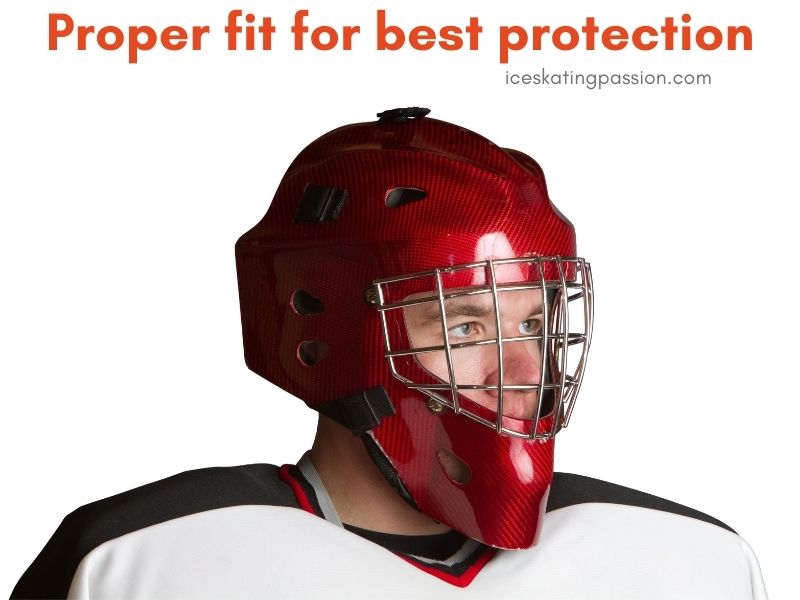
#2 - Size / Fit
Goalie masks come in three different sizes:
- Youth: Ages 5 to 7
- Junior: Ages 8 to 12
- Senior: Ages 13 and above
This classification is to be used only as a rough guide, and more reliance is to be placed on fit.
To ensure a secure fit, follow the procedure below:
- Measure the circumference of the head at the hat line (about one finger above the eyebrows)
- Buy a helmet as per the said measurement. Remember that every brand has its own sizing chart. Do not merely rely on broad sizing classifications only.
- Wear the mask and adjust the back straps. You may need to apply a bit of tension to secure the backplate tight against the back of the head.
- Pull up the chin cup and fasten it tightly so as to avoid any unnecessary movement of the mask.
Check the fitting as follows:
- No part of the backside of the head should be visible
- The gap between the backplate and the mask should not be more than ½ inch
- There are no gaps between the mask and the face, forehead, and cheeks.
- There are no gaps in the mask padding, and the forehead and face
- The top opening of the mask sits only about a finger above the eyebrows.
- There is no unnecessary movement when the goalie moves his head vertically or horizontally.
Remember that an ill-fitted mask can significantly expose the player to the risk of injury. Never compromise on the fit.
#3 - Adjustability
As stated earlier, ensuring a proper fit is the best way of maximizing the protection delivered by a goalie mask.
To adjust the helmet to your specific head shape, goalie masks come with adjustment straps
- On the backplate that usually allow adjustment in up to 5 areas
- On the chin to stabilize the helmet and reduce unnecessary movement.
When buying a goalie mask, ensure that the straps are adjustable to ensure a proper fit.
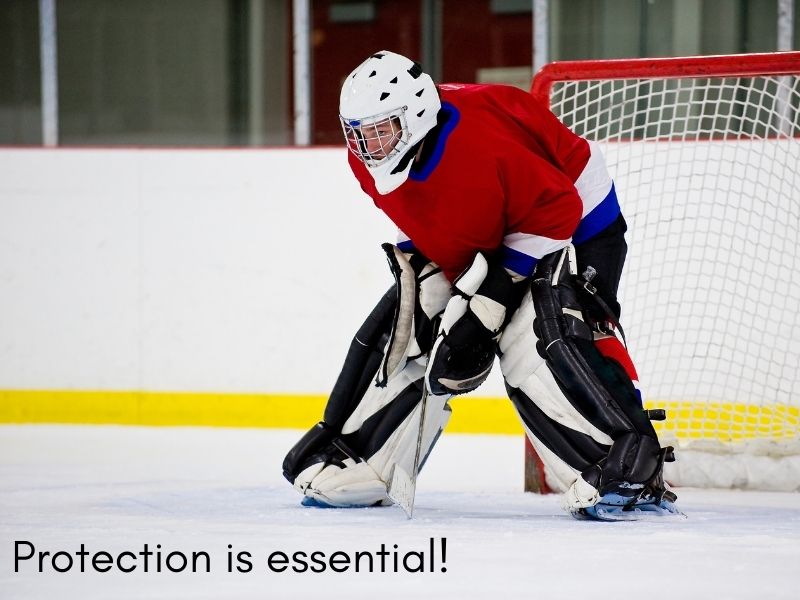
#4 - Protection level
The protection level offered by a helmet determines on the following key components:
Shell Material:
- Beginner/Recreational helmet (for adequate protection) - Carbon / Polycarbonate - Average protection
- Advanced level helmet (for extra protection) - Mix of carbon, polycarbonate, fiberglass - Good protectionPro-level helmet (for maximum protection) - Mix of carbon, polycarbonate, fiberglass, kevlar made using impact-resistant technology.
Lining Material:
The lining material used determines how well a helmet absorbs and distributes impact.
- Beginner/Recreational level helmets (for adequate protection) employ basic VN foam or comfort foam throughout the interiors.
- Advanced level helmets employ a combination of dual-density foam, memory foam, or smart foam for better impact absorption
- Pro-level helmets use high-quality foam combinations made using smart foams such as D30 foam, VTX, Impax, Poron XRD, etc.,.. for maximum impact absorption.
Padding:
In addition to lining, padding is also used on the interiors in specific high-sensitivity areas to:
- Enable complete neutralization of impact and enhance protection
- Minimize protection gaps in forehead and chin area
Basic goalie masks often do not come with extra padding, while advanced level or pro-level masks feature high-quality foams and smart-foams.
To ensure optimal protection, check whether the goalie mask comes with appropriate padding in critical areas.

#5 - Weight
It is a general assumption that the greater the helmet’s weight, the greater its protection level. However, that is not entirely true as
- A helmet that’s too bulky can cause headaches
- A helmet that’s too light can expose a goalie to risks arising from excessive helmet movement.
Thus, instead of blindly relying on the helmet’s weight, you must rely on how the helmet feels when worn. A helmet that feels comfortably heavy will provide the best protection to the goaltender.
#6 - Design / Style
Goalie masks often come in the following two variants:
- Wider fitting with a longer chin
- Straight fitting with a shorter chin
The difference between the two shell types is minimal, and it is best to choose one that feels more comfortable and complements your style of play.
In addition to this, you can always make the goalie mask more stylish by customizing it. (Check out some customization ideas given at the end of this article). However, a goalie mask should not be bought only because it looks ‘cool’ without considering the factors mentioned above.
New or Used
You should always buy a new goalie mask, even if it means spending a few extra bucks.
Used masks can be less protective on account of deterioration in padding, wear and tear of straps. They also run the risk of developing cracks sooner.
Frequently asked questions
Who was the last goalie to not wear a mask? Who wore the first goalie mask?
Last goalie to not wear a mask: Andy Brown, 1974
First goalie to wear a mask: Jacques Plante, 1959 - goaltenders were not wearing mask before because it was thought it would limit their visibility.
Are hockey goalie helmets safe?
As with a regular hockey helmet, hockey goalie helmets also do not guarantee complete protection against head and brain injuries. However, wearing a goalie mask can significantly minimize the risk of injury and any resultant damage.
Do hockey goalie helmets prevent a concussion?
They do reduce the risk, but NO, hockey goalie masks will not guarantee protection against concussions.
Concussions are caused by brain movement inside the skull that results from a direct impact on the head, neck, or face.
To reduce as much as possible the risk of a concussion, make sure that
- the mask is properly fitted
- the helmet is using high-impact absorbing materials
- a cage is guarding the face

How often should you replace your hockey goalie helmet? How long does a hockey mask last?
As per CDC, goalie masks must be replaced no later than 10 years. However, masks are certified for a period of 6 ½ years from the date of manufacture, and playing with an expired mask is not valid in some leagues.
That said, it is best to regularly check for cracks and deterioration in the quality of the mask. If required, you may even need to replace the mask sooner than its certification expiry.
What goalie helmet do most NHL players wear?
Most NHL goalies wear pro-level masks made by Bauer, while some goalies also opt for masks from brands such as CCM, Sportmask, and Vaughn.
2 Best Youth hockey goalie helmets
Let's start with out little player first. In youth hockey games, most players change positions to test them out. They are still learning and need to discover their strength.
However if your kid is already showing interest for the goalie position, here are some good starting helmets to protect his/her head:
Bauer Profile 930 Youth
Pros:
- Classic traditional design for a sleek look
- Adequate protection from all sides
- Comes with a sweat band
- Enhanced Puck View certified wire cage allows excellent visibility
- Impressive adjustability
Cons:
- Limited features may not support advanced levels of play.
Face protection: Enhanced Puck View Certified Wire Cage
Review:
The Bauer Profile 930 is a great helmet for young goalies whose skills are advancing.
It is made using the classic helmet mold for all-around protection. The Lexan EXL shell is tough enough to neutralize shots straight over the goalie’s head.
Inside, the Comfort Foam liner absorbs shocks quite well and keeps the helmet snug and comfortable.
The best feature of this helmet is the Enhanced Puck View technology on the cage. This certified mechanism does a gret job at enhancing the goalie’s vision, thanks to its clever bar placement.
The cage, the liner, the backplate, and the tough shell amplify the helmet’s protectiveness to make it an ideal choice for goalies working their way up the league ladder.
CCM Axis 1.5 Youth
Pros:
- Excellent impact protection
- Multi-layered padding for better comfort and protection
- Round bar technology cage for maximum visibility
- Supports growing goaltending skills
- Provides great value-for-money
Cons:
- Limited features may not support advanced levels of play
Face protection: Straight round bar cage
Review:
To be perfectly honest, this helmet is quite similar to the Bauer Profile 930 in terms of its offerings. Both these helmets are designed for beginner to intermediate level of play (where the goaltender is unlikely to face highly aggressive puck play).
The shell uses a solid polycarbonate that can readily neutralize impacts at sensitivity areas.
For the liner, though, this helmet uses a slightly more advanced technology than the Bauer Profile 930. Instead of using a single material liner all across, it uses a multilayered foam.
In terms of the cage, it is a classic. It uses a straight round bar mechanism to allow complete visibility.
Choice between them
Thus, if you had to choose between the Bauer 930 and the Axis A1.5, choose this one if you want a more rounder mask with an out-of-the-box fit and choose the Bauer for a sleeker look and more adjustability.
4 Best Junior hockey goalie masks
In this section, I will be enlisting my favorite Junior goalie masks and reviewing them in detail to make your choice easier.
The first 2 options are in a lower price and protection range, and the last 2 in a higher range.
Depending on the play level and teams your kids are part of, they will need more or less protection.
Bauer Profile 930 Junior
Pros:
- Classic traditional design for a sleek look
- Adequate protection from all sides
- Comes with a sweat band
- Enhanced Puck View certified wire cage allows excellent visibility
- Impressive adjustability
Cons:
- Limited features may not support advanced levels of play.
Face protection: Enhanced Puck View Certified Wire Cage
Review:
The Bauer Profile 930 is a great helmet for goalies with advancing skills.
It is made using the classic helmet mold that gives it a sleek look and provides all-around protection. The Lexan EXL shell is tough enough to neutralize shots straight over the goalie’s head.
The Comfort Foam liner also absorbs shocks quite well and does a great job at keeping the helmet feeling snug and comfortable.
A small perk of buying this helmet is that it comes with a sweat band that stops sweat from blocking the goalie’s vision.
However, the real highlight of this helmet is the Enhanced Puck View technology on the cage. This certified mechanism does a terrific job at enhancing the goalie’s vision, thanks to its clever bar placement.
The cage, the liner, the backplate, and the tough shell amplify the helmet’s protectiveness to make it an ideal choice for goalies working their way up the league ladder.
CCM Axis A1.5 Junior
Pros:
- Excellent impact protection
- Multi-layered padding for better comfort and protection
- Round bar technology cage for maximum visibility
- Supports growing goaltending skills
- Provides great value-for-money
Cons:
- Limited features may not support advanced levels of play
Face protection: Straight round bar cage
Review:
To be perfectly honest, this helmet is quite similar to the Bauer Profile 930 in terms of its offerings. Both these helmets are designed for beginner to intermediate level of play where the goaltender is unlikely to face highly aggressive puck play.
Thus, just like the Bauer goalie mask above, this helmet too does a great job with impact neutralization. The shell uses a solid polycarbonate that can readily neutralize impacts and deflect the puck quickly from sensitivity areas.
For the liner, though, this helmet uses a slightly more advanced technology than the Bauer Profile 930. Instead of using a single material liner all across, it uses a multilayered foam that complements the tough polycarbonate shell in impact absorption. The top soft layer of lining, on the other hand, keeps the helmet comfortably in place.
The cage uses a straight round bar mechanism to allow complete visibility.
The sweat band provided with this one is similar to the Bauer 930.
Choice between them
Thus, if you had to choose between the Bauer 930 and the Axis A1.5, choose this one if you want a more rounder mask with an out-of-the-box fit and choose the Bauer for a sleeker look and more adjustability.
And for the higher range:
Warrior Ritual F1+
Pros:
- Excellent helmet for intermediate players
- Impressive chin mobility
- Lightweight and highly comfortable
- Greater protection thanks to layering in key areas
- Comes with a sweat band and a dangler and tie in lace
Cons:
- Doesn’t complement a sweat band other than that provided
Face protection: HECC Stainless square cage
Review:
The Warrior Ritual F1+ is a beautifully crafted product that has fortified almost every element to meet the requirements of an intermediate-level goaltender.
First of all, its shell is instantly appealing thanks to how light it feels on the head. That said, it is still strong enough to withstand powerful impacts.
For the foam, Warrior has come with a formula called the Fantom Fit, which evenly distributes the helmet’s weight across the head for superior comfort. For impact absorption, the IMPAX foam dampens impacts quickly, and for sensitive areas, the helmet uses an extra dual-density padding.
In terms of fine-tuning the fit, the Warrior F1+ is equipped with a backplate strap and a chin strap system that can be adjusted for the perfect snug fit.
The only downside of this helmet is its size and shape only allow it to accommodate the sweatband that comes with it.
Bauer NME IX
Pros:
- Powercore shell allows better protection than most standard masks
- Multilayered foam protection dampens high impacts easily
- Excellent cage sightliness
- Great value-for-money for advancing playing skills
Cons:
- May not fit a wide head profile
Face protection: Certified Straight Bar
Review:
The Bauer NME IX is one of the most popular hockey masks available in the market.
The reason why this goalie helmet is so popular is that it offers top-notch protection without compromising on comfort at all.
The mask uses a unique powercore shell which is made using fiberglass and epoxy. This formula makes the shell highly impact-resistant and a champion at puck deflection.
The shell also feels lightweight even though a VTX liner backs it. The VTX liner combined with IX-foam is a potent mix when it comes to impact dampening.
To enhance its protectiveness further, the helmet uses the Bauer-hero Poron XRD foam in key impact areas. This means that you will be able to play without the fear of feeling hard shots.
In addition to this, Bauer treats you with add-ons such as a sweat band and a padded bag to help you get the most out of your helmet.
4 Best Senior hockey goalie masks - Recreational and Intermediate
In this section, we will look at some of the best hockey goalie masks for seniors. (Some variants may be the same as those covered in the Junior section)
CCM Axis A1.5 - budget option for recreational / leisure player
Pros:
- Excellent impact protection
- Multi-layered padding for better comfort and protection
- Round bar technology cage for maximum visibility
- Supports growing goaltending skills
- Provides great value-for-money
Cons:
- Limited features may not support advanced levels of play.
Face protection: Straight round bar cage
Review:
Designed for beginner to intermediate level of play where the goaltender is unlikely to face highly aggressive puck play.
This helmet too does a great job with impact neutralization with a solid polycarbonate shell and multilayered foam lining for impact absorption.
The top soft layer of lining, keeps the helmet comfortably in place.
The cage uses a straight round bar mechanism to allow complete visibility.
Warrior Ritual F1+
Pros:
- Excellent helmet for intermediate players
- Impressive chin mobility
- Lightweight and highly comfortable
- Greater protection thanks to layering in key areas
- Comes with a swear band and a dangler and tie in lace
Cons:
- Doesn’t complement a sweat band other than that provided
Face protection: HECC Stainless square cage
Review:
The Warrior Ritual F1+ has fortified almost every elements to meet the requirements of an intermediate-level goaltender.
The shell feels light on the head but is still strong enough to withstand powerful impacts.
For the foam, Warrior has come with a formula called the Fantom Fit, which evenly distributes the helmet’s weight across the head for superior comfort. For impact absorption, the IMPAX foam dampens impacts quickly, and for sensitive areas, the helmet uses an extra dual-density padding.
For adjustability, the Warrior F1+ offers a backplate strap and a chin strap system that can be adjusted for the perfect snug fit.
The only downside of this helmet is its size and shape only allow it to accommodate the sweatband that comes with it.
CCM Axis A1.9
Pros:
- High-level protection using top-class D30 foam
- Excellent fit, adjustability, and comfort
- Layered protection on the chin for a secure fit and protection
- Provides absolute value for money
- Supports intermediate to advanced level of play
Cons:
- A bit expensive for players new to goaltending
Weight: 3.2 lbs
Face protection: Stainless steel cage
Review:
The CCM Axis A1.9 Certified is a genuinely advanced goalie mask that packs in some of CCM’s best technology to deliver a goalie mask that’s truly supportive of aggressive play.
For the shell, this helmet uses a carbon fiber mix that is strengthened further in high-impact areas. To amplify the protection further, the fit can be easily customized using not only the backplate straps but also the D30 fortified chin strap.
However, the real reason why CCM helmets perform so well is that they use the highly pliable yet extremely shock-absorbent D30 foam. The D30 foam does not allow almost any impact to penetrate the shell.
In addition to this, the helmet uses a memory foam comfort liner that smoothly aligns the helmet against the goalie’s head profile.
The cage that comes with the mask does not obstruct vision at all and works well for competitive play.
Sportmask X8 certified
Pros:
- Pro-styled design for a sophisticated look
- High-quality protection
- Certified cage for maximum visibility
- Suitable for intermediate level of play
Cons:
- Hits on the side of the cage can be felt
Weight: 2.95 lbs
Face protection: Carbon steel cage
Review:
The Sportmask C8 Certified is a design based on its pro-level model T3. As a result, the helmet looks highly appealing.
The shell of this goalie mask uses multiple layers of fiberglass smoothly polished off for a more refined fit. It features a sleek chin that not only enhances the look as well as promotes chin mobility. The shell also feels lightweight yet comfortably snug when worn.
In terms of protection, the high-impact padding easily absorbs high-impact shots. However, the sides of the helmet do not feel as impact-absorbent as the top-end of the helmet. Nevertheless, the padding is protective enough to withstand an intermediate level of play easily.
The cage used is a certified straight bar that is also protective enough to take a few beatings.
Overall, if you are an intermediate-level player willing to look beyond Bauer or CCM, this goalie mask deserves your attention.
3 Senior Pro hockey masks for goaltenders
The goalie masks mentioned below are all pro-level helmets with a wide range of features to deliver optimal performance.
Bauer Profile 960
Pros:
- Great for vision on the ice
- High level of protection
- Lots of adjustability to find the perfect fit
- Suitable for elite players
- Offers excellent chin mobility
Cons:
- None
Face protection:
Review:
This is a mask for Elite goalies.
The shell features the Smacwrap Comp technology to dampens the vibration. It makes it one of the most protective helmet on the market.
Its liner is using both Airflow liner with Poron XRD and IX Foam. Plus, it has grooves at the edge for better breathability.
For the chin cup, it uses a new style with an elastic stretch strap for perfect adjustability.
And for the cage, it uses Enhanced Puck View Certified Wire to provide better vision when on the ice!
CCM Axis Pro
Pros:
- Provides the best value-for-money
- Delivers best-in-class impact absorption
- Extremely lightweight for total freedom of movement
- Ensures excellent chin mobility
- Comes with a mesh sweat band
- Cage allows full visibility and protects from impact
Cons:
- None
Face protection: Stainless steel cage
Review:
This is one of the best hockey goalie masks available in the market today. The price tag may seem steep, but when you wear the helmet, you will realize how its rich features swallow even the most impactful shots.
The way in which it provides this top-class impact absorption is by the use of the CCM special - D30 foam that can neutralize even the most high-intensity impacts. In addition to this, the CCM Axis pro uses a fluid placed inside the pod matrix that further improves the helmet’s shock absorption.
Even in terms of shell construction, the mask uses Sigmatex that enhances shell resilience to a great extent.
The helmet delivers such a high level of protection and comfort while allowing a highly customizable and lightweight fit.
If you are looking for a highly sophisticated construction for your pro-level matches, you should not look beyond this goalie mask.
Sportmask T3 certified
Pros:
- Affordably priced pro-level mask
- Strong shell to withstand high-impacts
- Straight bar shell for improved visibility
- Outstanding comfort and fit
Cons:
- A bit heavy
Face protection: Certified Straight bar cage
Review:
The Sportmask T3 is a top-of-the-line mask that has recently grown tremendously in popularity.
This mask uses a slightly different approach to protection than the masks produced by Bauer, CCM, and Warrior in the sense that it uses a strong shell with a comfort vinyl nitrile foam.
The shell construction distributes resin uniformly to prevent uneven pressure points. A uniform pressure fit means that the goaltender feels far more confident with movement and enhances the quality of play.
Moreover, the inherent fiberglass and carbon fiber aid in deadening shot impacts on the surface level itself.
This strength of the shell is wonderfully complemented by the comfort feel VN that makes the helmet feel breathable even with its extra weight.
Overall, this formidable contender is ready to take on long-standing brands like Bauer and CCM even at pro-levels of the sport.
Tips to get the most out of a hockey helmet
A hockey goalie mask always needs to be in great shape for it to deliver maximum protection. Here are some maintenance tips that will help you get the most out of your goalie mask:
#1 - Regular safety check
- For young players, assess the mask's fit regularly and upgrade to a bigger size as soon as the need arises.
- Periodically inspect your mask for visible damages such as cracks, missing parts, deterioration of the foam, bending of the cage etc. Do not try to fix the damages yourself. Always consult an expert.
- Before every session or match, check if the certification stickers have expired.
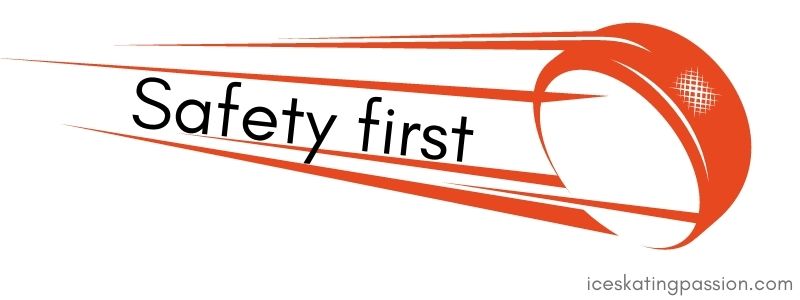
#2 - After practice care
A hockey helmet is a breeding ground of bacteria on account of how humid and sweaty it gets. Drying after each practice or game is essential:
- Always use a hockey bag to carry all your equipment.
- Take the mask out of the bag as soon as you can.
- Let it air dry completely . Ideally, use a gear drying rack.
#3 - Odour control
If the helmet starts to stink, spray it with a gear deodorizer.
And, once in a while, gently wipe the inside of the mask with mild soap and water.
#4 - Corrosion
Unscrew the cage once every few months to prevent corrosion.
#5 - How to prevent skin irritation when wearing a helmet?
Skin irritation results from the ongoing friction between the mask and the head and face of the goalie. To reduce skin irritation, it is best to:
- Reduce unnecessary friction by ensuring a proper fit
- Buy a helmet that promotes breathability
#6 - How to control sweat in a hockey goalie mask?
Excessive sweating can make the goalie mask feel uncomfortable. But what’s worse is that sweat trickling down the eyebrow can obstruct vision and prevent crucial saves.
The most effective way of preventing sweat is to wear sweat bands.
Leading brands such as Bauer, CCM, etc., often provide a free cloth or mesh-based sweatband with goalie masks that are highly absorbent and prevent sweat from trickling down the forehead.
How to customize your goalie mask
Contrary to the other players, the goalies go crazy in decorating their helmets. Some have even become famous!
Best hockey goalie masks designs
In the NHL, sometimes it can be more about the design of the mask than about the quality of the performance.
But if you have both you become legendary.
Some of the most famous designs include:
- Gerry Cheevers with fake stitches
- Gilles Gratton and its lion head
- Gary Bromley and its skull
- Ken Dryden and its classic red, white and blue mask
- ...

How to customize a hockey goalie mask
If you want to do the same:
- Option1 - Pay an artist that specialize in goalie mask painting (plenty listed on Google)
- Option 2 - very simple with decals (but make sure they don't peel off!)
- Option 3 - Paint it yourself with Paint Pens
- Option 4 - Paint yourself with airbrushing
Warning
Some hockey leagues require a pre-approval of helmets.
Make sure to check the regulations of your league to see what you can do.
How to paint a hockey goalie mask yourself - step-by-step (1 to 13)
STEP 1. Sketch your design ideas on paper.STEP 2. Remove all straps, hardware and add-ons.
STEP 3. Remove the lining, or, if not removable, tape the inside of the helmet to protect the lining. This is essential if you don't want to damage your mask!
STEP 4. To remove the gloss on the helmet, sand the shell with 400-grit sandpaper (Never use an electric sander or coarse sandpaper!).
But be careful:
Do not to sand it down too much--you.
Do not sand the metal buckles or snaps.
STEP 5. Clean the shell with a soft cloth and rubbing alcohol.
STEP 6. Put a base coat on the helmet - often white or black, but white will give you more flexibility with colors later.
STEP 7. Paint the the background color - if your want one
STEP 8. Blow dry the primary
STEP 9. Use Pinstripping Tape (for automotive that adapts to curve) to create the structure of your design and tape stencils
STEP 10. Apply color with Paint Pens or Airbursh (paint should be water-based acrylic - be sure to follow instruction to use airbrush and wear a respirator)
STEP 11. Let it dry
STEP 11 - Repeat process if you need superposition of colors
STEP 12 - Finish your helmet with a clear coat. Let it dry and repeat 2 or 3 times.
STEP 13 - Reattach all the pieces
END
Complete your hockey goalie equipment set!
Other equipment to get for hockey goalie players:
- Best hockey mouthguards - read article
- Best hockey skate laces - read article
- Best hockey goalie gloves - read article
And if you want to work out off ice:
- 10 essential elements to cover in your off-ice workouts - read article
- 10 best off-ice hockey training equipment - read article
- Best hockey shooting pads and tiles - read article
- Best slide boards for hockey training - read article
- Best synthetic ice for hockey players - read article
- Best net targets and shooting tarps - read article
- Best hockey passers and rebounders - read article
- Best balance boards for hockey players - read article
Share it on your favorite social media!
